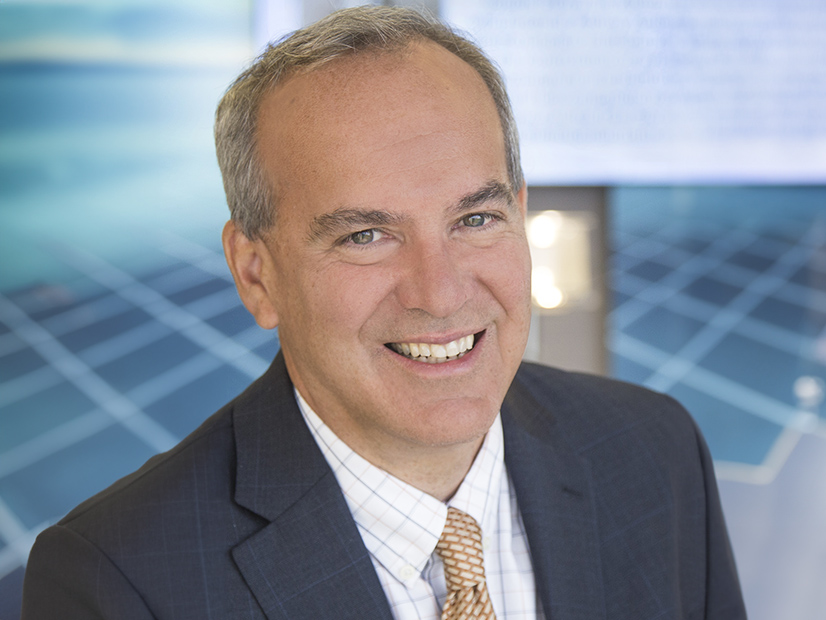When former Chief Operating Officer Rick Gonzales looks back on his more than two decades at NYISO, two events stand out among all else: the Northeast blackout in 2003 and Superstorm Sandy in 2012.
The 2003 blackout cut power to 55 million people in the U.S. and Canada and reduced the ISO’s load by 80%. Gonzales found himself continuously on the control room floor performing engineering support duties and working with the control room operators to restore power. The key was getting the ISO’s biggest line reconnected with PJM.
“I worked 24 hours straight that day,” Gonzales, who retired Dec. 31, said in an interview with RTO Insider. It was “probably the best day of my career, even though it’s probably the event that most people dread when they think about it.”
The blackout prompted Congress to enact the Energy Policy Act of 2005, which gave FERC authority to set mandatory reliability rules.
Gonzales remembered three long days of work following Superstorm Sandy, which severely impacted New York, particularly New York City, killing more than 50 people and destroying thousands of homes and an estimated 250,000 vehicles.
“[The storm] caused significant loss of generation and load, but we were able to keep the New York state grid up,” he said. “That was another really interesting event — really challenging event — but we came through it pretty well.”
Gonzales, who has been with NYISO since its inception in 1999, began working in the New York energy industry in 1987 when the ISO’s predecessor, the New York Power Pool, was responsible for grid operations. He was replaced as COO by Executive Vice President Emilie Nelson, effective Oct. 1. (See Emilie Nelson Named NYISO COO, Replacing Rick Gonzales.)
Reflecting on the early years at NYISO, he recalled “a lot of growing pains” and “regulatory uncertainty.”
“Getting [NYISO’s] markets up was a great thing from a reliability perspective” he said, since under NYPP, “we didn’t have the level of control of operating resources that we have today. … It really was a great step in the right direction and a major improvement to reliability.”
Gonzales recalled the debate over whether ISOs should be large, multistate regional transmission owners like PJM or ISO-NE. Gonzales said he and other staff concluded that “there really wasn’t a lot of cost savings” in being a large, multistate operator, since the generating fleets of New York’s neighbors were similar to its own at the time.
At one time, “being a single-state ISO was viewed as a negative, when compared to the broader multistate ISOs,” he said. Now, however, being a single-state entity “makes things easier because we only have one regulator and one set of policies to try and implement.”
“It’s been really intriguing to me over the years, how [being a single-state ISO] has turned from almost a negative into a positive attribute for the organized market in New York,” he added.
Asked for an insight he wanted to share with the next generation of leaders, Gonzales responded that “having a good technical foundation” and “being able to interact with regulators and stakeholders” are keys to success.
“So much of the energy industry is now charged with policy and regulatory directives,” he said. “So, it’s great to have a strong technical understanding of whether these new policies can work.”
NYISO’s Evolution
As the ISO has evolved from a basic grid operator responsible for keeping the lights on to a key player in New York’s clean energy shift it has been increasingly charged with providing unbiased technical information.
“I’ve seen a tremendous increase in the amount of information flowing out of NYISO to the state regulators primarily, but also to the Legislature,” he said, adding that ISO staff has been “doing a lot more outreach to these folks to provide them with unbiased information.”
Gonzales said he is optimistic about NYISO’s ability to adapt to the challenges of transitioning from fossil fuels to renewable energy resources.
From an engineering perspective, the biggest risk is “maintaining the expected level of reliability under this grid in transition,” he said.
He said New York should study how other regions transitioning away from fossil fuels, such as California, have faced reliability challenges.
“I think that regulator’s fear is that if reliability is compromised and people’s lights go out, and it can be linked in any way, shape, or form to the new set of resources or policy initiatives, then the public may not be supportive [of this transition] in the long term,” he said.
Gonzales said regulators “seem to understand that this [transition] is a difficult balance” and that the public broadly understands this challenge as well.
Gonzales also was asked about the role emerging clean energy resources, such as distributed energy resources (DERs) or dispatchable emissions-free resources (DEFRs), have in New York’s transition and the grid of the future.
Gonzales responded that these resources will be critical to achieving the goals of the state Climate Leadership and Community Protection Act (CLCPA), which calls for an 85% reduction in greenhouse gas emissions by 2050 and a 40% cut by 2030.
“The DEFR question is really interesting because it could be anything,” he said. “It could be modular nuclear; it could be some iron-based battery or other long-term battery. But it’s such an unknown that it is difficult to opine on.”
He added that the ISO is close to implementing the software necessary to integrate DERs into the ISO’s markets, which should help significantly with the state’s transition.
“Anything that’s dispatchable, however, is going to be a good thing for grid operations,” he added. “And even though [DEFRs] may be subject to operational limitations, if we can model it, then we can make it work.”

